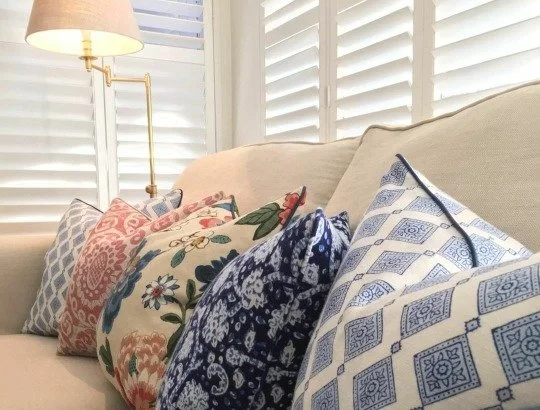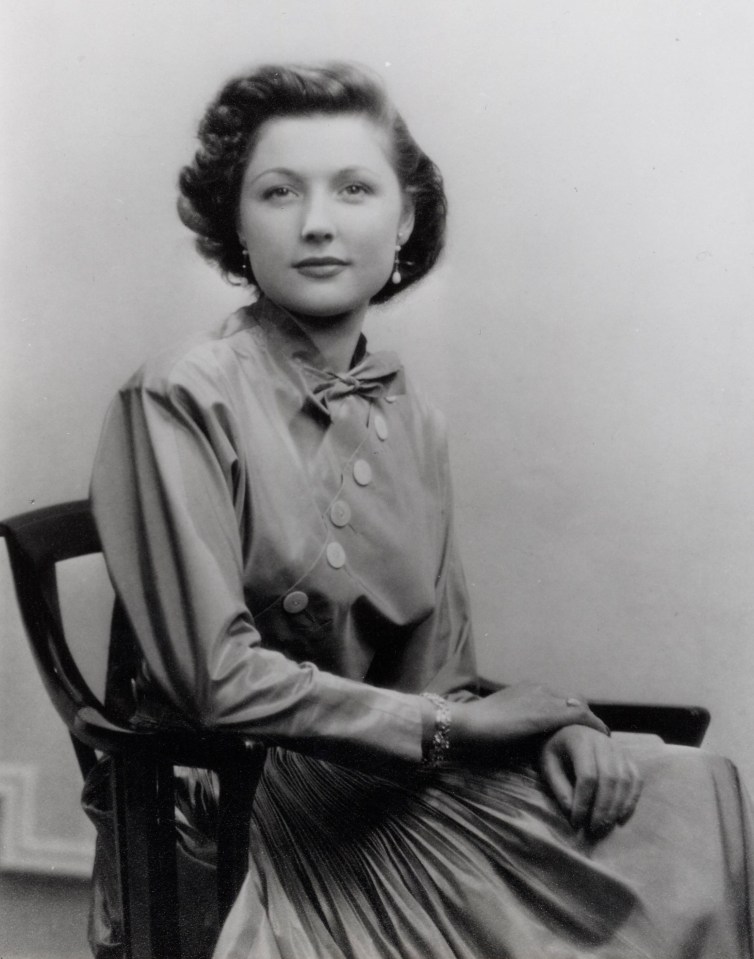Pattern is a powerful design element for creating a home that looks and feels uniquely you. Studies into the psychology of interior design show that we feel better when our spaces have a moderate amount of visual complexity. Pattern...
A lot of interior design “inspiration” feels like it’s missing something to me.
Take this image below for example.

I see this design style everywhere.
Now don’t get me wrong, I think this is a nice space. It’s uncluttered and the plants, curves and texture bring a sense of warmth and comfort. But it’s just not a particularly interesting or inspiring room. It tells me nothing about the people who live here and hence it feels flat and aloof – more like a showroom than a home.
I call this approach to decorating the “Path of Least Resistance” interior design style.
Here’s why:
It’s formulaic – since it’s easy to copy, this style removes the design overwhelm and decision fatigue that you might associate with decorating your home.
It’s accessible – you’ll find this style in every major homewares store which minimises the time and effort you need to spend designing your home.
It’s inoffensive – you don’t need to worry what other people will think of your home because a lot of homes look like this.
If the “Path of Least Resistance” interior design style is popular and easy, why would you even consider taking a different approach to decorating your home?
In my opinion, the one BIG reason to steer clear of the “Path of Least Resistance” interior design style is that it’s simply not good for you.
This is why:
Studies on the psychology of interior design show that we feel better when our spaces have a moderate amount of visual complexity. Being in a space with more layers of interest can improve our mood, help us solve problems better, give us energy and even create more harmonious interactions with other people.
We are less stressed and more productive when our spaces our tailored to our psychological needs, including the way we process information.
Authentic spaces that express our personality, interests and life journey help us feel connected with our homes and hence connected with ourselves. Authenticity is key to wellbeing and one of the goals of interior design psychology.
Many of us follow the “Path of Least Resistance” interior design style by default because it’s easy and it’s everywhere. It requires less mental energy and effort to follow this road than the path of least resistance than to reflect deeply on our relationship with our home.
But can I suggest that it’s absolutely worth learning how to elevate your home from a showroom to your own personal haven. It’s incredibly rewarding and a wellbeing priority to tap into your home’s potential to delight and nurture you. – this is what Interior Design Psychology is all about.
There are a variety of ways to use psychology in your home to create a more authentic, visually appealing home space and playing with pattern is one sure-fire approach.
How to reinvigorate and personalise your space with pattern
Pattern can be one of the trickiest design elements to pull off in your home and I think that’s why it is often avoided or overlooked. But it’s worth it and so much fun once you get the hang of it.
Pattern is defined in the Collins dictionary as:
“… an arrangement of lines or shapes, especially a design in which the same shape is repeated at regular intervals over a surface.”
Patterns can be structured and regular like stripes and geometric shapes. Or they can be organic and irregular like flowers and spots. What your preference is will depend upon your personality.
There are many ways to introduce pattern in your space including wallpaper, a rug and/or décor.
If you’re just starting out on your pattern journey, I’d suggest experimenting with pattern on the cheaper, less permanent features of your space. I learned how to mix pattern by playing around with cushions on my sofa. It proved to be a low risk, rewarding way to develop my pattern proficiency.
Here are some tips for introducing pattern into your home.
Tip 1: Get inspired
If you’re not sure where to start, look for some inspiration. A couple of my pattern heroes are William Morris (1834 –1896) who’s patterns dramatically changed the fashions of the era, and Anna Spiro, a Queensland based interior designer with a unique gift for using pattern and colour.

Tip 2: Choose your mood.
What mood are you aiming for? Choose the type of patterns that make you feel the way you want to feel in your space.
You might aim for a soothing pattern in your bedroom and a whimsical, playful pattern in your children’s playroom.
Different patterns can evoke different feelings:
stripes and spots can feel energising and playful;
florals and organic, curvy patterns can feel soothing;
geometric patterns can feel grounding and formal.
Tip 3: Decide on your pattern parameters.
How much pattern is right for you?
This will depend on your personality and interior design style. People have different preferences for visual complexity based on their personality. Extroverts tend to enjoy more visually complex spaces (more pattern and detail) than introverts. Some interior design styles use more pattern than others, so create a Pinterest board and start pinning patterns that align with both your personality and taste.
Tip 4: Choose your lead pattern first.
Your lead pattern is the pattern on which you base all other colour and pattern decisions in a space. Typically, it would be multicoloured, picking up most of the colours in your colour scheme. The colours in your lead pattern will play an important role in how the pattern feels so consider colour psychology as part of your pattern choice too (you can read about fact and fiction of Colour Psychology here).

This is the lead pattern in my living room
Once you have chosen your lead pattern, choose other patterns for your space to compliment this one. Make sure you include a mix of pattern sizes and types.

It takes a bit of experimentation and practice to get the hang of pattern but it’s a powerful design element for creating a home that looks and feels uniquely you. Pattern is the icing on your interior decorating cake and will instantly elevate your space from bland to inspiring.









